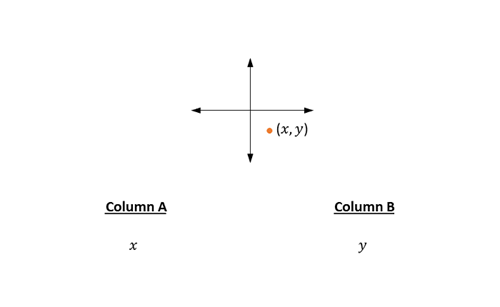What is the SCAT Test?
The School and College Ability Test (SCAT) is a standardized assessment administered by the Johns Hopkins Center for Talented Youth (CTY) to identify academically gifted students. As an above-grade-level test, the SCAT exam challenges students with questions typically given to students in higher grades, providing an accurate measurement of advanced reasoning abilities.
What is the Purpose of the SCAT?
The SCAT serves as the gateway to prestigious CTY programs, offering exceptional educational opportunities for gifted students. Unlike traditional grade-level tests, the SCAT measures reasoning abilities rather than memorized knowledge, making it essential for students to develop strong critical thinking skills.
Key SCAT Test Features
- Format: Computer-based multiple-choice test
- Sections: Verbal reasoning and quantitative reasoning
- Time: 22 minutes per section (44 minutes total)
- Question Count: 50 scored questions per section (plus 5 unscored experimental questions)
- Testing Location: Available at approved computer testing centers
SCAT Test Level Sample Questions
SCAT Sample Question- Elementary Level
Which column is bigger?

TestPrep-Online Tutor's Tip:
"When I teach students quantitative comparison questions, I always tell them: "Don't rush to calculate! First, estimate and look for shortcuts." In this case, quickly calculate both sides: 15+8=23 and 10+10=20. Column A is greater. The key is practicing mental math so you can solve these quickly and accurately."
SCAT Sample Question- Intermediate Level
Which column is bigger?

TestPrep-Online Tutor's Tip:
"Here's what I tell my intermediate students: "Look for patterns and use your multiplication facts!" Both expressions equal 36, so they're equal. Practice your times tables until they're automatic - this will save you precious time during the actual test. Always double-check by asking yourself: "Does this make sense?"
SCAT Sample Question- Advanced Level
The given pair of words is related to each other in a certain way. Choose the pair of words that is related to each other in the same way.
Counselor : advice ::
TestPrep-Online Tutor's Tip:
"For verbal analogies, I teach students my "relationship formula": First, identify the relationship - "A counselor GIVES advice." Then find the same relationship pattern. A benefactor GIVES aid, just like a counselor GIVES advice. The answer is A. Always create a sentence that clearly shows the relationship, then test each option with that same sentence structure!"
SCAT Test Levels and Target Grades
The SCAT is offered at three different levels, each designed for specific grade groups:
| SCAT Level | Student Grade | Test Content Level | Score Comparison Group |
|---|---|---|---|
| Elementary | 2nd-3rd grade | 4th-6th grade level | 4th-5th graders |
| Intermediate | 4th-5th grade | 6th-9th grade level | 6th-9th graders |
| Advanced | 6th-8th grade | 9th-12th grade level | 9th-12th graders |
SCAT Test Format: What to Expect
The SCAT exam consists of two main sections that assess different reasoning abilities:
Verbal Reasoning Section
55 questions (50 scored, 5 experimental)
22 minutes to complete
Focuses on verbal analogies
Tests vocabulary knowledge and relationship comprehension
Example: "Counselor : advice :: ?" (Students must identify a pair with the same relationship)
Quantitative Reasoning Section
55 questions (50 scored, 5 experimental)
22 minutes to complete
Focuses on mathematical comparisons
Tests number operations and mathematical reasoning
Example: Students compare two quantities to determine which is greater
An optional 10-minute break is provided between sections.
How is the SCAT Scored?
Understanding the SCAT scoring system is crucial for effective SCAT test prep:
Raw Score: The number of correctly answered questions out of 50 scored questions per section
Scaled Score: Raw scores are converted to scaled scores ranging from 400 to 514
Percentile Ranking: Scaled scores are compared to students in the comparison grade level
High percentile rankings are required for admission to CTY programs, typically above the 95th percentile.
Boost your SCAT Scores!
Explore our SCAT Practice Packs
Why Take SCAT Practice Tests?
Effective SCAT testing preparation includes regular practice with authentic materials. Here's why SCAT practice tests are essential:
- Familiarity with Format: Reduces test anxiety by exposing students to the exact question types and format
- Skill Development: Strengthens verbal and quantitative reasoning abilities
- Time Management: Improves speed and accuracy under timed conditions
- Weakness Identification: Helps pinpoint areas needing additional focus
- Confidence Building: Provides realistic preparation experience
Choose Your SCAT Test PrepPack
10 Effective SCAT Test Prep Strategies
Maximize your child's performance with these proven SCAT test prep strategies:
- Start Early: Begin preparation at least 3-4 months before the test date
- Use Official Materials: Practice with authentic SCAT test sample questions
- Develop Vocabulary: Focus on roots, prefixes, and suffixes to understand unfamiliar words
- Master Mathematical Operations: Ensure solid understanding of grade-appropriate and above-grade math concepts
- Practice Analogies: Work on recognizing different types of relationships between words
- Time Management: Practice under timed conditions to improve speed without sacrificing accuracy
- Create a Study Schedule: Consistent, regular practice yields better results than cramming
- Focus on Weak Areas: Identify and address challenging concepts
- Take Full-Length Practice Tests: Simulate the actual test experience
- Maintain Healthy Habits: Ensure proper sleep, nutrition, and exercise for optimal brain function
Test-Taking Tips for Your Child's Upcoming Exam
Boost your SCAT Scores!
Explore our SCAT Practice Packs with
Tests, Quizzes and Expert Tips from $49
Preparing for SCAT Success
The SCAT test serves as a gateway to the prestigious Johns Hopkins CTY programs, which offer exceptional educational opportunities for gifted students. With proper SCAT exam preparation and regular practice using quality SCAT practice tests, your child can develop the confidence and skills needed to excel.
Remember that SCAT testing measures reasoning abilities rather than memorized knowledge, so focus your SCAT test prep efforts on developing critical thinking skills. Utilize structured SCAT test practice materials and maintain a consistent study schedule to maximize your child's potential for success.
Start your preparation journey today with official practice materials and watch your child's confidence and abilities grow!
Frequently Asked Questions About the SCAT Test
CTY uses SCAT scores to determine eligibility for their gifted education programs. High-scoring students may qualify for summer programs, online courses, and other educational opportunities. Specific score requirements vary by program and grade level.
We recommend starting preparation at least 3-4 months before the test date. This allows sufficient time to develop reasoning skills, practice with sample questions, and build confidence without overwhelming your child.
If your child doesn't initially meet the requirements, they can retake the test after the waiting period. Additionally, there may be alternative qualification paths or programs with different entry requirements. Consider this an opportunity to continue developing skills for future attempts.



